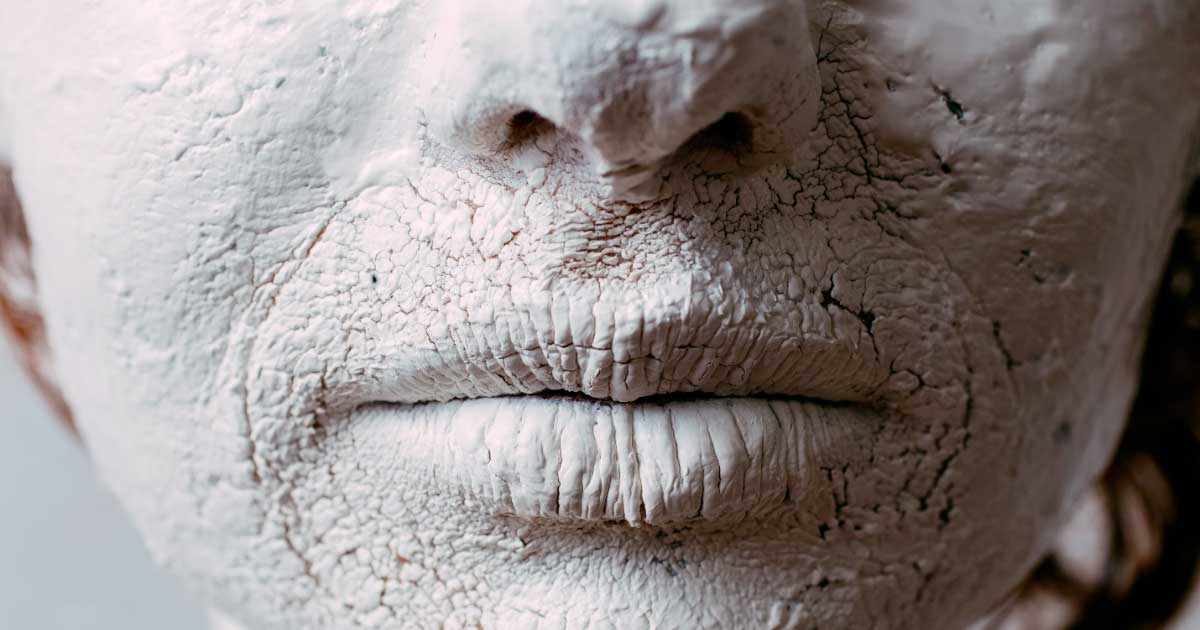Dying to be Beautiful: 7 Crazy Ingredients Used in Ancient Cosmetics
Makeup has been around for centuries, but getting your glam on in ancient times wasn’t as simple as going to your local Sephora. Before safe and regulated products existed on the market, ancient civilizations had to do what they could with the ingredients available. As a result, there were several weird (and gross) ingredients used to create makeup products throughout history. Below, we compiled a list of some of the craziest ingredients used in ancient beauty products.
1)Lead
Believe it or not, one of the most common ingredients in ancient cosmetics was lead. Lead was found in many different products, including face cream, foundation, blush, and eyeliner. One of the most common products featuring lead was whitening foundation. In Roman times, women with pale skin were seen as of a higher status than other women. If a woman had pale skin, it indicated that she was wealthy enough to live indoors all day, while her servants went out to do her labor for her. This product was primarily made with cerussa, also known as white lead, which gave wearers bright white skin.
- Swans Fat, Crocodile Dung, and Ashes of Snails: Achieving Beauty in Ancient Rome
- Bygone Beauty and Body: The Origins of Cosmetics in the Ancient World
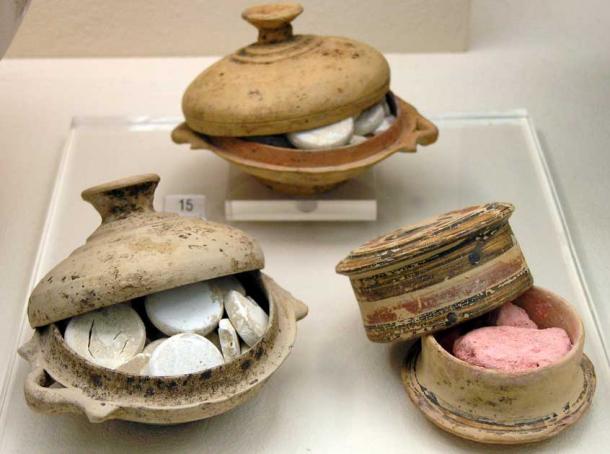
Makeup pots with molded tablets of white lead, found in a tomb from the 5th century BC. (Marsyas / CC BY SA 2.5)
Egyptians had other applications for lead in their cosmetics. They primarily used lead to create kohl, which was a substance used to make eyeliner. Kohl was made of a combination of lead sulfide, ash, and soot. Frequent use of lead-laced kohl as eyeliner eventually led to significant eye health issues. It is unknown whether ancient Egyptians ever discovered the source of these problems.
- Scientists Amazed to Discover 2,000-Year-Old Face Cream Still Containing Last Finger Imprints
- The Chinese May have Been First to Use Synthetic Skin-whitening Cosmetics
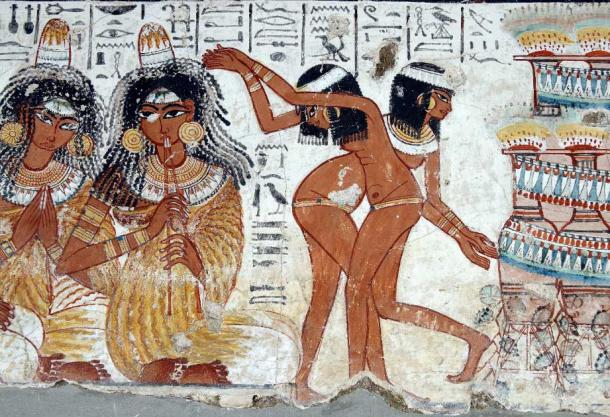
Ancient Egyptian women wearing kohl, from a tomb mural in Thebes, 1420–1375 BC. (Public Domain)
2)Rat Poison
In the 1930s, a hair removal cream called Koremlu was introduced to the cosmetic marketplace. While it was originally advertised as a safe and effective way to remove unwanted hair on your body, users quickly started reporting serious health issues. Some of these health issues included blindness, tooth decay, nerve damage, and respiratory issues. The cause? Rat poison.
Thallium acetate, the active ingredient in both Koremlu and rat poison, was poisoning Koremlu’s users along with their household pets. The product was soon pulled from the shelves, but not thanks to health regulations. The company had quickly gone bankrupt after women stopped buying its products, leading to its demise.
3)Animal Excrement
Yes, you read that right. Ancient people sometimes included animal feces in their makeup products. In fact, it was somewhat common in beauty masks, which were often used on the face before the application of makeup. Sometimes, they also included animal urine and bile.
One of the most common ways animal excrement was used in beauty products was in face whiteners. Dried crocodile dung was often applied to the face to whiten the skin, or could be mixed with additional face-whitening ingredients such as chalk or the aforementioned white lead. Some records state that men often complained of the smell of women’s faces while wearing makeup. I wonder why?
4)Cinnabar
White faces indicated high social status, but they didn’t always signify health. Many ancient Romans also used rouge, or blush, to pinken their cheeks to appear more ‘healthy’. While lots of rouges were made out of relatively safe ingredients, including flower petals and red chalk, some were made of not-so-safe ingredients. One of these ingredients was cinnabar, a bright red form of mercury. Some homemade rouge would even use a combination of cinnabar and red lead for extra-concentrated concoctions.
Oh, and they also used crocodile dung in some rouges too. Yuck!
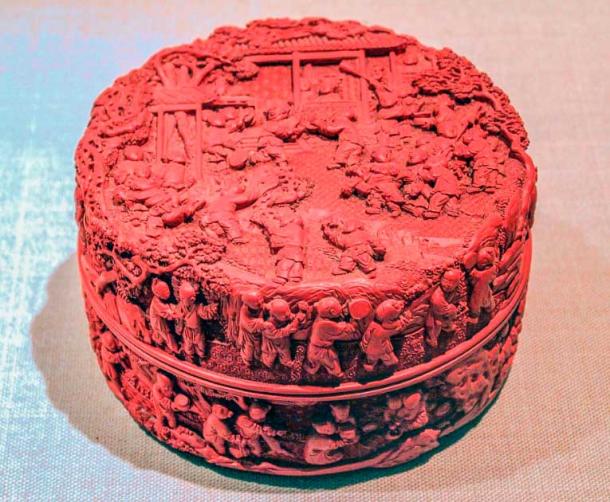
Cinnabar was widely used as a decorative pigment as well as a toxic cosmetic. A Chinese "cinnabar red" carved lacquer box from the Qing dynasty. Boxes like this were frequently painted with a lacquer containing a cinnabar pigment. (Andrew Lih / CC BY SA 2.0)
5)Cochineal Bugs
Love a bright red lip? You might not after this. Cochineal bugs are bright red bugs native to Central and South America. In ancient times, Aztecs would kill, dry, and crush these bugs and mix the remains with other powders to create scarlet dye. While it was originally used solely for dying fabric, the Aztecs eventually started using the pigment in their paint and beauty products as well. It was often used in rouges and lipsticks due to its bright red color.

This mortar and pestle are covered in cochineal. Cochineal is a parasitic insect that lives in cactus leaves and happens to make this bright red color when it is squished. Gardens of nopal, or prickly pear cactus are grown just to grow and harvest these critters for the use of making red dye. (Travis / CC BY NC 2.0)
Here’s the kicker: dye made from cochineal bugs is not a thing of the past. In fact, several modern makeup companies still use pigment from cochineal bugs in their blush and lipstick. If you notice ingredients such as carmine, carminic acid, E120, or natural red 4, your makeup is dyed by cochineal bugs. Luckily, it’s still safe - but we understand if it grosses you out, too.
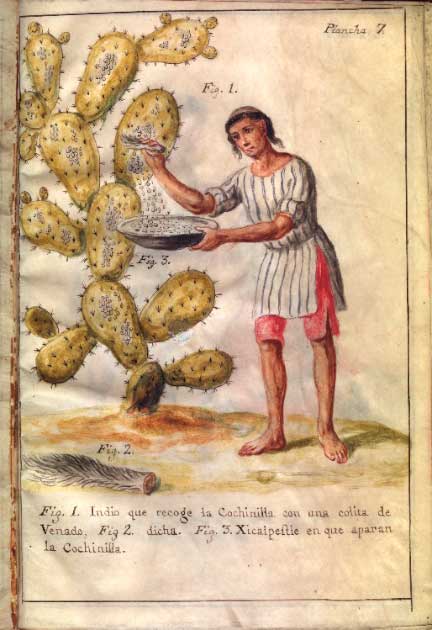
Cochineal bugs are still collected and used today for dyes and cosmetics. "Indian Collecting Cochineal with a Deer Tail", 1777 drawing (Public Domain)
6)Oxen Hair
Back before brow pens and microblading, ancient people got their best brows from oxen hair. Around 3000 BC, Grecian women would remove hair from oxen and use them to create fake eyebrows for themselves. They would typically use some sort of natural adhesive to get the brows to stick, such as sap or honey.

Fake eyebrows have been fashionable for over 5,000 years. In ancient Greece, ox hair was common. Photo shows an Egyptian painted wood mummy portrait of a woman from the Roman period, circa 2nd or 3rd century AD. (Public Domain)
7)Arsenic
As if lead wasn’t bad enough, some ancient makeup products also contained arsenic. Like white lead, arsenic was used in facial creams during the Victorian and post-Civil War eras to give women pale white complexions. Outside of facial cream, arsenic was also put onto small wafers that were sold for consumption. These wafers were advertised as “arsenic complexion wafers” and claimed to remove pimples and other blemishes for a clear face. Those with many blemishes often became ill quickly from eating too many wafers, resulting in vomiting, diarrhea, abdominal pain, and eventually death.

Dr. James P. Campbell's Safe Arsenic Complexion Wafers were advertised as ‘guaranteed absolutely safe’, circa 1890. Spoiler alert: They weren’t. (Smithsonian / Public Domain)
Beauty without the Pain
Luckily, the beauty industry has changed for the better in modern times. We now know the dangers of certain chemical compounds so they can be avoided in future makeup production. Extensive testing of new makeup products can hopefully prevent health issues arising from cosmetics in the future. The next time you hit the town with your favorite glam look, be thankful you haven’t covered your face in lead or sulfur. Just remember you might still have beetle juice on your lips!
Top image: People have been dying to be beautiful for centuries, and toxic cosmetics are nothing new. Many makeup ingredients have proven painful, or even deadly, over the years. Source: KNV / Adobe Stock
By Lex Leigh
References
Cartwright, M. September 8. 2019. Cosmetics in the ancient world. World History Encyclopedia. Available at: https://www.worldhistory.org/article/1441/cosmetics-in-the-ancient-world/
Dangerous beauty: A short history of hazardous cosmetic... Global Founders London. (n.d.). Available at: https://www.globalfounders.london/blog/dangerous-beauty-a-short-history-of-hazardous-cosmetics-and-nat#:~:text=Arsenic%2Dlaced%20lotion%20during%20the,through%20the%20use%20of%20arsenic
Eschner, K. June 26, 2017. Three horrifying Pre-FDA Cosmetics. Smithsonian.com. Available at: https://www.smithsonianmag.com/smart-news/three-horrifying-pre-fda-cosmetics-180963775/
Grist, K. July 29, 2022. Dangerous beauty: Hazardous chemicals and poisons in historic cosmetics. Science Museum Group. Available at: https://www.sciencemuseumgroup.org.uk/blog/dangerous-beauty-hazardous-chemicals-and-poisons-in-historic-cosmetics/
A history of cosmetics from ancient times. Cosmetics Info. October 19, 2021. Available at: https://www.cosmeticsinfo.org/get-the-facts/a-history-of-cosmetics-from-ancient-times/
Little, B. September 22, 2016. Arsenic pills and lead foundation: The History of Toxic Makeup. National Geographic. Available at: https://www.nationalgeographic.com/science/article/ingredients-lipstick-makeup-cosmetics-science-history
Mapes, D. January 10, 2008. Suffering for beauty has ancient roots. NBCNews.com. Available at: https://www.nbcnews.com/id/wbna22546056
















